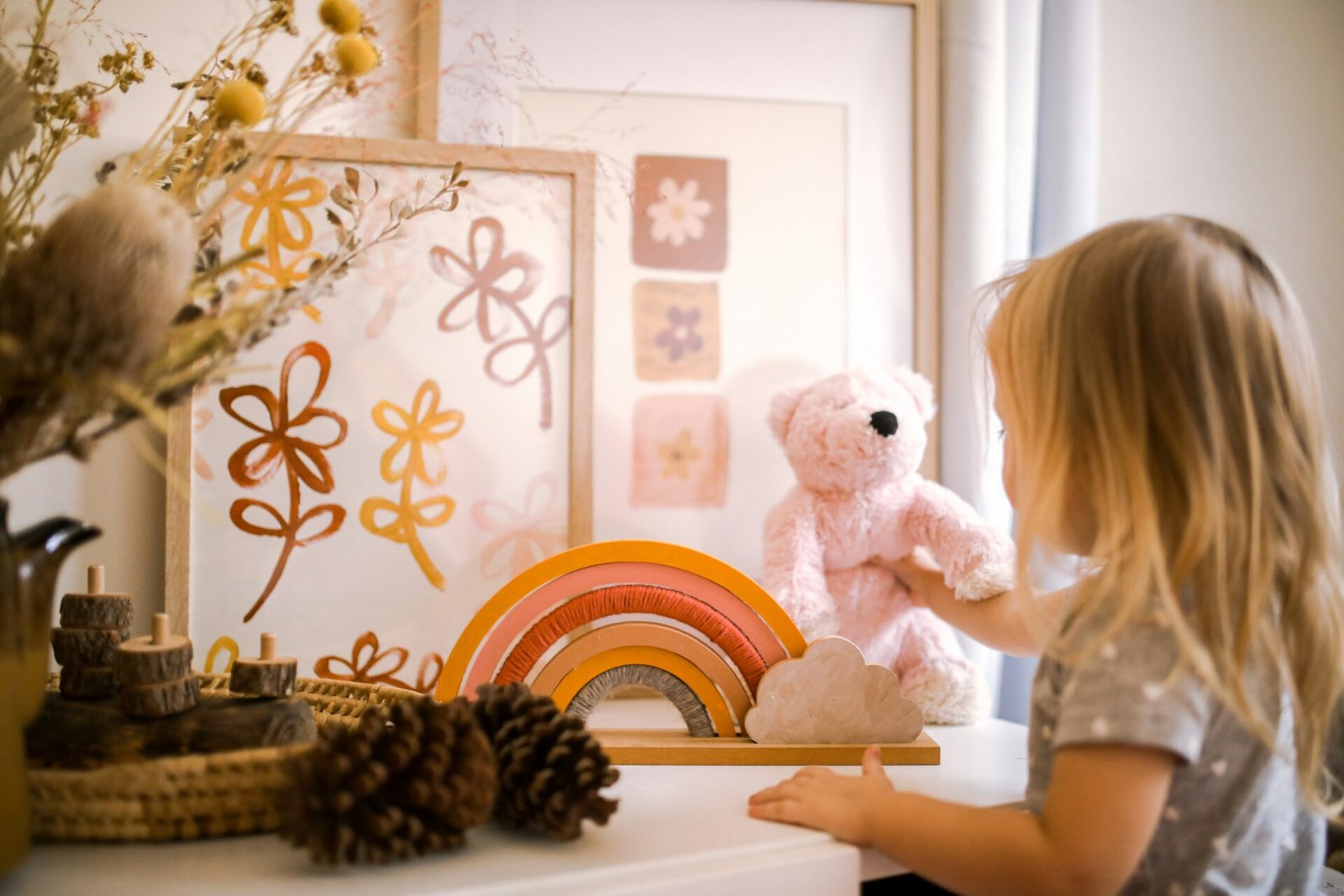Before going for a walk, my pockets are always filled with the essentials: a cable, a pack of wipes, something more substantial for sharp teeth, an eco-bag, a water bottle, and so on. With skillful arrangement of items, we can handle any life situation with minimal damage to eardrums. Often, the little one simply wants to participate in whatever we are doing — and I am endlessly amazed by this natural drive toward socialization. Our “visitor” is 13 months old: he helps carry groceries, pushes the stroller, holds a cup of coffee. If a child gets upset or shows dissatisfaction, it’s likely because they were not given a chance to take part in something meaningful.
Children value activity more than toys
We have already gone a certain way, and my initial impression has been confirmed: toys are less important to a child than experiences and activities. Overly colorful and noisy plastic toys often appear dull. Still, we do have a favorite pink Fisher-Price car — exceptions exist. A child who eagerly rummages through a drawer of safe kitchen utensils or rolls a ball is engaging in natural and beneficial play.
The history of toys: from simple amusements to the entertainment industry
Simple toys have existed since time immemorial. Tracing the origin of each is nearly impossible. The transition to a developed toy industry occurred in the 18th–19th centuries, when children began to be recognized as individuals. Popular items then included board games, soap bubbles, and kaleidoscopes. At the beginning of the 20th century, a true toy boom occurred: toys became primarily for entertainment rather than education. Parents increasingly left children with toys instead of shared interaction.
Mobiles: beneficial or “zombie effect”?
The popular mobile can be either useful or harmful. In the Montessori approach, mobiles are made from natural materials, with shapes and colors appropriate for the child’s age. Excessive use of bright and noisy mobiles, however, can lead to passive “zoning out.”
How to choose a toy for your child: tips for parents
Mirrors
One of the most recommended Montessori toys. Acrylic mirrors are safe for play.
Household items as toys
Safe household items are great for toddlers. Avoid plastic bags and balloons (risk of suffocation) and small parts (risk of swallowing).
Musical instruments
Pots, small drums — excellent for developing hearing and rhythm.
Water play
A safe space where the child can pour water develops fine motor skills.
Cleaning tools
Brushes, brooms, unplugged vacuum cleaners, safe cables — favorite “toys” for children.
Obstacle courses
Pillows, curtains, tunnels, boxes with fabric flaps — stimulate physical activity.
How many toys does a child need
Research shows: fewer toys mean better concentration, creativity, and longer playtime. Ideally, keep 3–4 varied toys accessible and rotate them periodically.
Which materials to choose for toys
The best choice is natural materials: wood, fabric, safe metal. Many plastic toys are made from toxic materials, hazardous even for adults.
Recommended brands of safe toys
Among verified global brands: Melissa & Doug (wooden puzzles, sorters, play sets), PlanToys (eco-friendly wooden toys from rubberwood), Hape (natural materials, non-toxic water-based paints), Grimm’s (famous wooden rainbows and open-ended play forms), Vilac (French wooden toys with safe paints), Bigjigs Toys (affordable and quality wooden toys), Janod (stylish design, natural materials), Goki (wooden toys with safe paints), Tender Leaf Toys (responsible production and eco-friendly packaging).
Among Ukrainian brands to consider: Cubika (eco-friendly wooden toys from Ukrainian beech), Woodland Toys (educational and role-play sets), Igroteco (developmental games and construction sets), МАМÓ (handmade, custom orders), Lislis Toys (natural materials and minimalist design).
Choose products free from harmful paints and varnishes, with EN71 and ASTM safety certifications confirming the absence of toxic substances.
Do not limit toys by age or gender
The categories “for boys” and “for girls” are conditional. Choose what suits your child specifically.
Parental involvement is the key factor in development
Any toy is of little value without adult participation. And anything can become a toy if you are there and play together.
Conclusion: when choosing toys, think not only about entertainment but also about development, safety, and shared time with your child.



